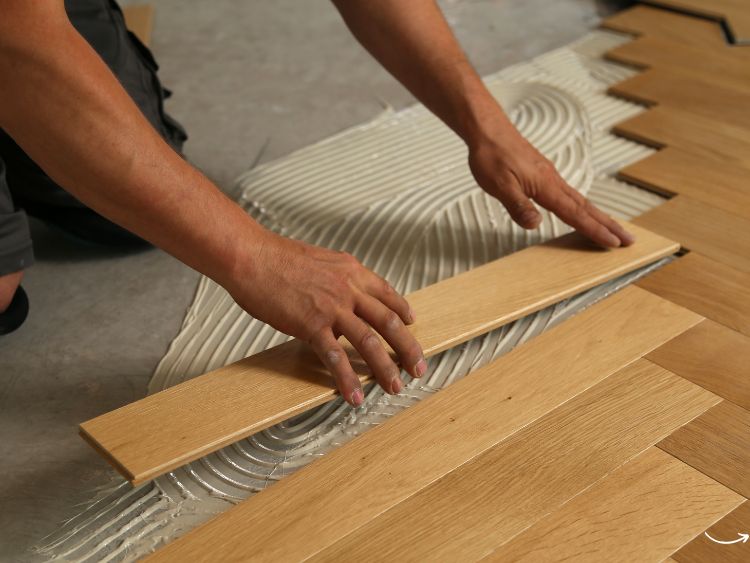Sagging floors can be a nightmare for homeowners, signaling structural issues that require immediate attention. Whether you’re dealing with a slight dip or a significant slope, addressing sagging floors is crucial for maintaining the integrity and value of your home. In this comprehensive guide, we’ll explore everything you need to know about sagging floor repair, from identifying the causes to implementing effective solutions.
When you notice a floor that’s not quite level, it’s natural to feel a twinge of concern. A sagging floor is more than just an aesthetic issue—it can indicate serious underlying problems. But don’t worry! With the right knowledge and tools, you can restore your floor to its former glory. This article will walk you through the causes, detection, and repair methods for sagging floors, ensuring your home remains safe and stable.
Understanding the Causes of Sagging Floors
1. Foundation Issues
The foundation is the bedrock of your home. When it shifts or settles unevenly, floors can start to sag. Common foundation problems include:
- Soil Movement: Expansive soils can swell when wet and shrink when dry, causing the foundation to move.
- Poor Construction: Inadequate foundation design or poor construction techniques can lead to sagging floors.
- Water Damage: Excess moisture around the foundation can erode the soil and weaken the structure.
2. Structural Damage
Structural elements like beams and joists play a crucial role in supporting floors. Damage to these components can result in sagging:
- Rot and Decay: Wood rot due to moisture or termite damage can weaken beams and joists.
- Overloading: Placing too much weight on floors, such as heavy furniture or appliances, can cause them to sag.
- Improper Alterations: DIY home improvements that alter structural components without proper support can lead to sagging.
3. Age and Wear
Over time, even well-built homes can experience floor sagging due to:
- Natural Settling: All homes settle over time, but excessive settling can cause floors to sag.
- Material Fatigue: Continuous use and age can weaken materials, leading to structural issues.
Detecting Sagging Floors
Visual Inspection
Start by visually inspecting your floors. Look for:
- Uneven Surfaces: Noticeable dips or slopes.
- Gaps and Cracks: Gaps between the floor and baseboards or cracks in the flooring material.
Using a Level
A carpenter’s level is a handy tool for detecting uneven floors. Place it on various spots of your floor to check for levelness.
Bounce Test
Walk across the floor and notice if it feels bouncy or spongy. This can indicate weakened support structures.
Repairing Sagging Floors
1. Foundation Repair
If the cause of your sagging floor is foundation-related, consider these solutions:
- Underpinning: Strengthening the foundation by extending it deeper into stable soil.
- Slab Jacking: Lifting and leveling a sunken concrete slab by injecting a grout mixture beneath it.
- Drainage Improvement: Ensuring proper drainage around your home to prevent water damage.
2. Joist and Beam Reinforcement
For structural issues, reinforcing or replacing damaged components is key:
- Sistering Joists: Adding new joists alongside existing ones to bolster strength.
- Beam Replacement: Replacing damaged beams with new, sturdy ones.
- Adding Support Posts: Installing additional support posts beneath sagging areas.
3. Subfloor Repair
If the subfloor is damaged, repair or replacement may be necessary:
- Plywood Replacement: Replacing damaged sections of plywood subfloor.
- Leveling Compound: Using a self-leveling compound to fill in low spots and create a flat surface.
4. Professional Help
While some repairs can be DIY-friendly, significant structural repairs should be handled by professionals. Hiring a contractor ensures the job is done safely and correctly.
Preventing Future Sagging
Regular Inspections
Routine inspections can catch early signs of sagging before they become major issues.
Proper Maintenance
Keep your home in good shape by addressing moisture issues, maintaining a stable foundation, and avoiding overloading floors.
Professional Assessments
Have a structural engineer or contractor assess your home periodically, especially if you notice any changes or plan to undertake major renovations.
FAQs about Sagging Floor Repair
What are the first signs of a sagging floor?
Early signs include uneven surfaces, gaps between the floor and walls, and a noticeable slope when walking across the room.
Can I repair a sagging floor myself?
Minor repairs like sistering joists or using leveling compounds can be DIY projects. However, significant structural repairs should be handled by professionals.
How much does it cost to repair a sagging floor?
The cost varies widely depending on the cause and extent of the damage. Simple repairs might cost a few hundred dollars, while major structural repairs can run into the thousands.
How long does it take to repair a sagging floor?
The timeline depends on the complexity of the repair. Minor fixes can be done in a day or two, while extensive foundation or structural work may take several weeks.
Is a sagging floor dangerous?
Yes, a sagging floor can indicate serious structural issues that, if left unaddressed, can compromise the safety of your home.
Summary
Sagging floors are a common but serious issue that requires prompt attention. By understanding the causes and implementing effective repair strategies, you can restore your home’s stability and safety. Regular maintenance and professional inspections are key to preventing future problems. If you notice signs of sagging, don’t delay—take action to protect your home and your peace of mind.
Authoritative Links
- https://www.familyhandyman.com/project/how-to-fix-sagging-floors/
- https://www.thisoldhouse.com/foundations/21018642/what-to-do-about-a-sagging-floor
- https://www.hgtv.com/design/remodel/interior-remodel/how-to-fix-a-sagging-floor
- https://www.bobvila.com/articles/sagging-floors/
- https://www.homereference.net/fix-sagging-floors/

